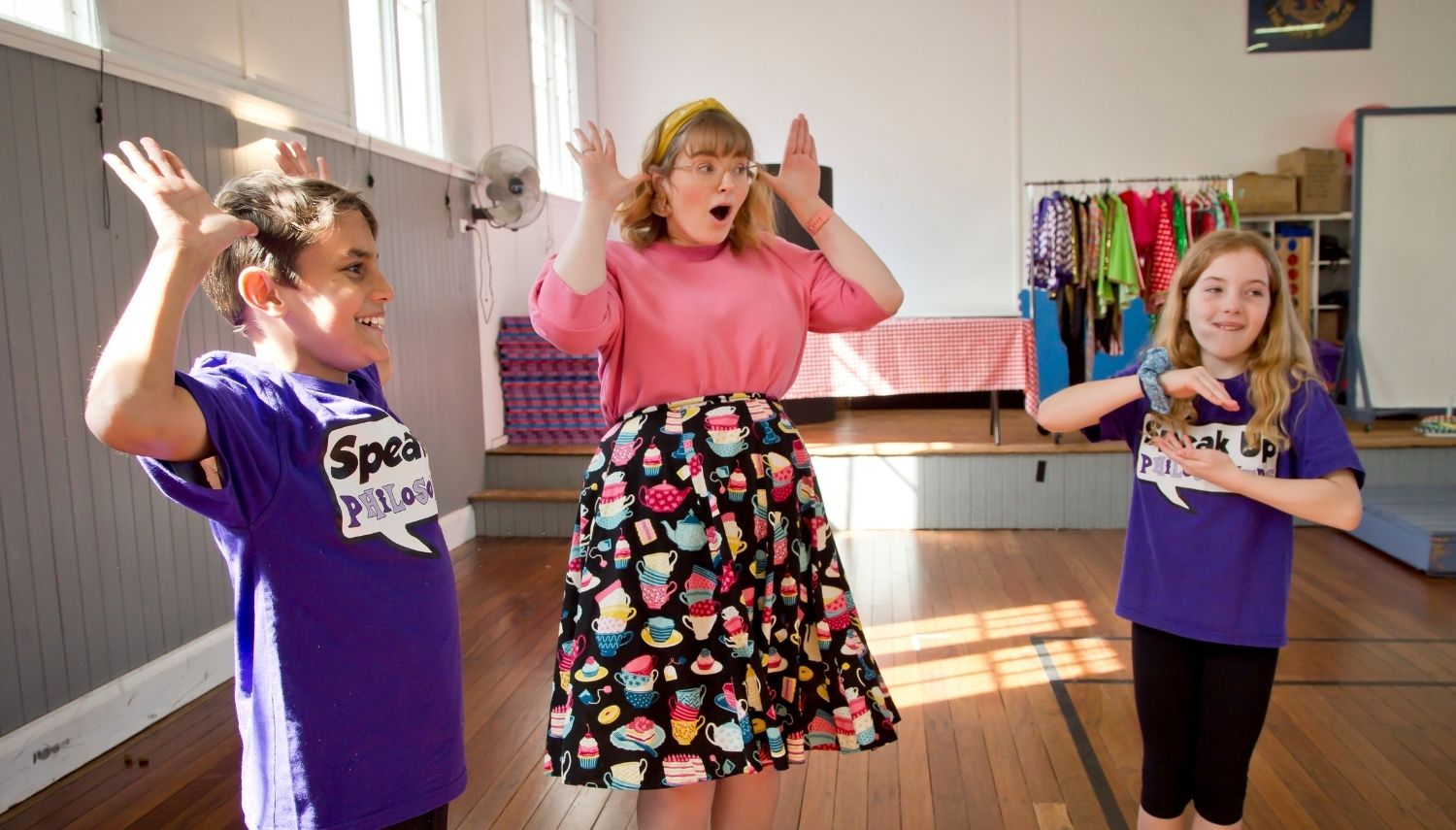
15 Apr Can you teach imagination
Kids have some amazing brains in those heads of theirs and as a boring old grown up myself, I am easily envied by their natural ability to imagine fantastical worlds around them and play pretend. As our students grow it’s not uncommon to see them utilising those imaginations less and less, as their standardised schooling teaches them to ‘contain the silly’. As drama teachers, we make it our mission to nurture our students valuable imaginations and never lose that sparkle! But is it possible to teach something like ‘Imagination?’ Something that exists in our brains rather than hard facts on paper? We don’t teach Imagination, we nurture it.
Using Games to Nurture Imagination
Drama teachers have a secret…. Games!! Much like sneaking vegetables into mac and cheese, every game we play in the drama classroom (and we play a lot) is filled with sprinkles of vegetables, or in our words, learning experiences. We use games to teach a variety of skills including confidence, stage skills, techniques, team work and of course, imagination (without the students even knowing!)
Commonly we will use a process called ‘Story Drama’ to immerse our students into imaginary worlds. Magical items, quests and visits from characters, allows our students to delve into new worlds and build skills in creative problem solving and improvisation. Story Drama takes the game like energy of ‘playing pretend’ and turns it into a reality in the classroom. There’s nothing more exciting than working with your classmates and your imagination to build a fantastical fairy dust machine to help save the fairies who send you letters each week.
The Magic of Guided Mime
From our littlest of students all the way to our tallest dreamers, Guided Mime is another magical way for students to explore the depths of their imagination in a safe and independent fashion. Usually starting on the floor, eyes closed, listening to music, the teacher narrates the students through an adventure around the space. Sometimes these narrations can be simple and allow the students to explore freely, other times they can be detailed and slow to really encourage the students to engage all of their senses; “You open your eyes and you’re laying on a bed of leaves, they feel prickly under your skin, you hear one crunch in your hand.” Other times the teachers leaves the narration open ended to allow the students imaginations to take over naturally; “You quickly rip open the Christmas present and inside is a….?” For most students, they fall in love with guided mime because it is as much fun as a game.
Watch this video of Miss Olivia teaching some of our old kindy students a guided mime >>
Introducing Improvisation
Of course, one of the most quintessential ways to inspire imagination in the drama classroom is through improvisation. Sometimes when we say the I-word (😱 Improvisation!!😱) drama kids start to panic! Improv, as good as it is for nurturing imagination, can be scary for many of our students. And that’s fair enough!
Instead of throwing students up on stage (or into the deep end!) and leaving them flailing, our teachers have a knowledge vault of games that teach *all* the skills. It takes away that feeling of potential failure and adding in some extra fun! We might race to come up with animals starting with a certain letter, or character games where one student is an alien and the other is their English translator. They are all creative and fun ways to nurture our students imaginations.
Holding on to your imagination as you mature and grow is important. (You can read more about that here.) While we can’t teach imagination, we can certainly help our students maintain it and use it to its full potential as they grow up into adults. All successful people have lively imaginations. As Walt Disney said, “If you can dream it, you can do it.”
~ Miss Grace

